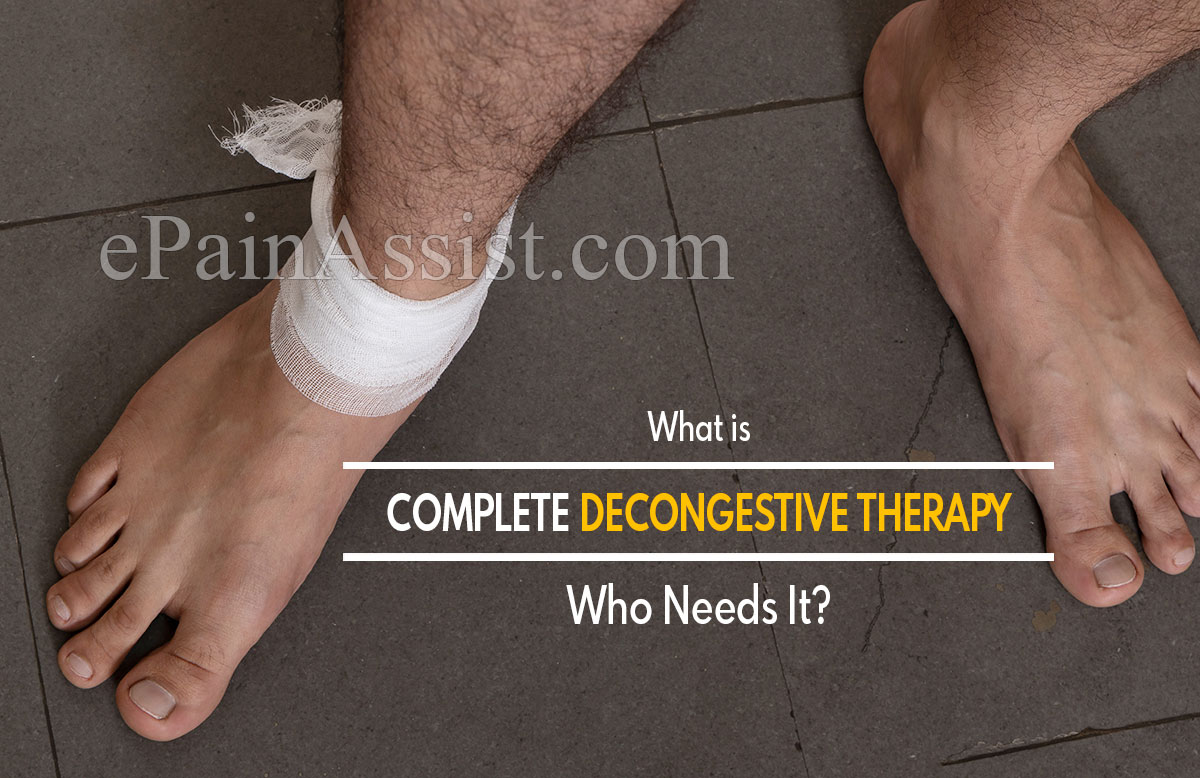What is Complete Decongestive Therapy?
Complete decongestive therapy is the treatment given for lymphedema, a condition in which excess fluids collect in the parts of the body. There is damage to the lymph nodes and blood vessels and this leads to blockage, which causes swelling. This is known as lymphedema.
If left untreated, lymphedema can worsen and leads to complications such as skin infection. There is no cure for lymphedema and complete decongestive therapy is a way to manage it.

What Happens in Complete Decongestive Therapy?
The goal of complete decongestive therapy is to reduce the pain and swelling associated with lymphedema. The therapy consists of:
- Manual Lymphatic Drainage: Manual therapies are used by certified therapists. These therapies help in releasing and moving trapped fluid so that it can be absorbed.
- Compression: Compression sleeves or bandages are wrapped around the affected area to apply pressure and move excess fluid in the body and lessen swelling.
- Exercise: There are remedial exercises that are an important part of complete decongestive therapy. Regular exercises can be helpful in improving the flow of lymph fluid and preventing swelling. During exercise wearing compressing sleeves and garments can be more helpful.
- Skin Care: Skin changes and skin infections are common side effects of lymphedema. Also, wearing compression garments may make the skin itchy and dry. This increases the risk of infection. Keeping the skin clean and protected from the sun is very important.
Phases of Complete Decongestive Therapy
Complete decongestive therapy takes place in two phases.
Phase 1 or Intensive Therapy
Phase 1 is the decongestion phase and aims to bring down swelling and allows the skin to improve. The duration of this phase depends on the severity of the condition. According to health care professionals, it can take up to 2-4 weeks.(1) It is recommended to wear compression garments for 23 hours a day during this phase and should be removed to cleanse the skin.
After the approval of the doctor, a certified occupational therapist performs manual lymphatic drainage. In some cases, a compression machine may be used to drain the lymphatic fluid.(2)
A person can, by using simple hand techniques, perform lymphatic drainage on self.
Phase 2 or Maintenance Therapy
The Second phase of complete decongestive therapy is to further progress the treatment after the first phase. It should be done immediately after phase 1 to delay the trigger in swelling.
Maintenance therapy can last for a few months or years depending on the severity of the illness.
Who Needs Complete Decongestive Therapy?
There are several health conditions that can lead to lymphedema. People with lymphedema can benefit from complete decongestive therapy.
A study from 2018 found that, although rare, primary lymphedema can be an inherited condition that affects children and adults.(3)
Other causes of lymphedema include:
- Chronic cellulitis
- Side effects of medical treatment
- Short-term or long-term injury
An overview of 2021 indicated that the common cause of lymphedema in the United States in cancer treatment is chemotherapy and radiation therapy.(4)
Risks Associated with Complete Decongestive Therapy
Complete decongestive therapy is a safe therapy. Research done in 2020 found no serious risks associated with it and most people had positive results.(5)
But just like any other procedure or therapy, complete decongestive therapy has a few side effects associated with it. These include:
- Rapid heart failure
- Asthma
- Deep vein thrombosis
- Low blood pressure
- Thyroid disorder
- Severe nerve damage
- Severe arterial insufficiency
Complete Decongestive Therapy for Children
The therapy is the same for children as for adults. The difference is just that children need additional emotional assurance from a caregiver or mental health expert.
Children need custom-made compression garments and as they grow the garments need to be changed.
Complete decongestive therapy is considered one of the best programs for lymphedema. Many studies have found positive results in people undergoing this therapy. It helps in managing the condition and improving the quality of life. But, it is important to get it done by a specialist for the best results.
Also Read:
